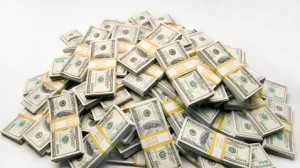China’s high export figures raise suspicion

 SHANGHAI – China is seeing a resurgence of “hot money” seeking to cash in on the rallying yuan and record-high interest rates, contributing to distortions in its trade data as speculators move money through regulatory loopholes. The return of distorted trade figures is unlikely to be welcomed by the People’s Bank of China, although it is facing a dilemma. It wants to keep the yuan from appreciating too quickly but at the same time has pledged to gradually free up its grip on the currency to encourage its global use.
SHANGHAI – China is seeing a resurgence of “hot money” seeking to cash in on the rallying yuan and record-high interest rates, contributing to distortions in its trade data as speculators move money through regulatory loopholes. The return of distorted trade figures is unlikely to be welcomed by the People’s Bank of China, although it is facing a dilemma. It wants to keep the yuan from appreciating too quickly but at the same time has pledged to gradually free up its grip on the currency to encourage its global use.
November exports rose 12,7 percent on-year, blowing past a Reuters poll that predicted 7,1 percent growth, but many analysts suspect the performance was inflated by speculators moving money into the country through fake trade transactions.
Nomura economist Zhang Zhiwei pointed out in an email to clients that China’s export growth far exceeded that of its Asian neighbors in November, which is unusual.
At the same time, imports grew less than expected and factory output slightly underperformed expectations; all three together form a combination analysts find highly suspicious.
“The Hong Kong number is suspicious,” said Wei Yao, economist with Societe Generale in Hong Kong. “The month-on-month increase is 28 percent, the strongest since April.”
Hong Kong’s economic integration and close proximity with China has made it a favored target for fake trade in the past; companies can cheaply ship lightweight products to Hong Kong, sell them at elevated prices, then use the resulting foreign currency into yuan in China, thus evading controls on investment flows by dressing them up as trade receipts.
Beijing found the November data suspicious, too, and regulators announced over the weekend they will crack down on banks’ and companies’ use of foreign currency for trade finance by ensuring that trade deals are authentic and by monitoring for unusual cross-border cash flows.
While official capital flow data is not yet available for November, hot money inflows had begun to surge again in September and October, Reuters estimates show, with $24 billion flowing into the country in October, up from US$16 billion in September.
The PBOC’s first option of choice is using administrative crackdowns to close the loopholes, but that’s a challenge because Chinese companies are adept at finding new ones.
Alternatively, it can let the market dictate the yuan’s exchange rate, which would introduce more risk and presumably discourage some speculators, but would also risk a destabilizing rise in the currency that could hurt exports.
The speculative inflows are similar to a phenomenon in March that saw Chinese exports post a suspicious spike. It resulted in a crackdown by Beijing on hot money inflows and currency speculation.
In March the primary purpose of the speculation was to cash in on the rallying yuan, but this time analysts say there are more factors at play.
The currency has hit record highs and is up 2.6 percent this year, already in excess of traders’ expectations.
Still, while its appreciation is an obvious factor, economists point out that interest rate liberalization in China, combined with policy tightening, also has made yuan assets more attractive. Many Chinese bonds are now paying out record yields.
“We are concerned that rising RMB/USD and rising bond yields could once again entice capital inflows via over-reporting of exports,” Lu Ting and Sylvia Sheng of Bank of America Merrill Lynch wrote in a note to clients this week.
At the same time, depressed yields for dollar-denominated assets, thanks to continued easing by the US Federal Reserve, are only encouraging investors both inside and outside of China to hold yuan.
The problem for policymakers is that reforms to domestic interest rates that have produced such attractive yields have not been accompanied by reforms to the foreign exchange market, which remains — despite promises of imminent liberalization — tightly controlled.
Forex traders told Reuters that the PBOC deliberately held back the yuan spot rate for most of November by instructing major state-owned banks to buy up dollars for yuan.
This appears to have convinced companies both onshore and in Hong Kong to scramble for yuan to bet that further appreciation would ensue once the bank let the market go, creating a positive feedback cycle.
And in fact that is precisely what happened this week.
On Friday, traders said the central bank had signaled a fresh round of appreciation, both by lifting its official guidance rate and by instructing its proxy banks to stop buying dollars. The currency went on to set a new record of 6.0703 per dollar on Tuesday.
This situation, in which the PBOC attempts to keep interest rates high while simultaneously holding back the yuan from strengthening too quickly, is an expensive proposition as it requires the bank to manually sop up all the money flowing into China to keep it from pushing the yuan up, which in turn only adds to China’s massive pile of low-yielding dollar reserves.
Otherwise the flood of inflows would add to the money supply, depressing interest rates.
“It’s a dilemma. I don’t see a clear solution,” said Wei of Societe Generale.
“The thing is, China cannot afford a very accommodative monetary policy anymore; it’s too dangerous in terms of systemic risk. On the other hand, if the PBOC doesn’t want to maintain complete capital controls, they have to accept appreciation pressure.”-Reuters.








Comments